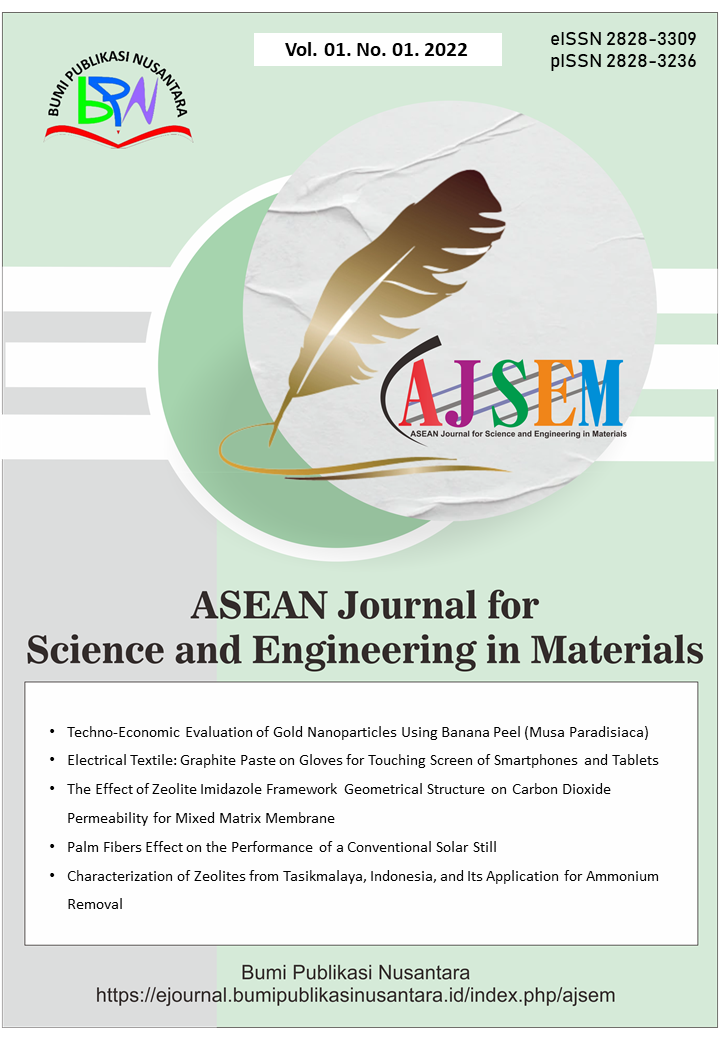Thermal Effects on the Mechanical Performance of Adhesively Bonded T-Joints for Structural Applications to Support Sustainable Development Goals (SDGs)
 ), Izzawati Basirom(2), Mohd Shukry Abdul Majid(3), Ruslizam Daud(4), Abu Bakar Shahriman(5),
), Izzawati Basirom(2), Mohd Shukry Abdul Majid(3), Ruslizam Daud(4), Abu Bakar Shahriman(5),
(1) Universiti Malaysia Perlis
(2) Universiti Malaysia Perlis
(3) Universiti Malaysia Perlis
(4) Universiti Malaysia Perlis
(5) Universiti Malaysia Perlis
 Corresponding Author
Corresponding Author
Abstract
Keywords
References
Anderson, B. J. (2011). Thermal stability of high temperature epoxy adhesives by thermogravimetric and adhesive strength measurements. Polymer Degradation and Stability, 96(10), 1874-1881.
Berthe, J., Brieu, M., Deletombe, E., and Portemont, G. (2014). Temperature effects on the time dependent viscoelastic behaviour of carbon/epoxy composite materials: Application to T700GC/M21. Materials and Design (1980-2015), 62, 241-246.
Blanco, J. M., Arriaga, P., Rojí, E., and Cuadrado, J. (2014). Investigating the thermal behavior of double-skin perforated sheet façades: Part A: Model characterization and validation procedure. Building and Environment, 82, 50–62.
Budhe, S., Banea, M. D., de Barros, S., and da Silva, L. F. M. (2017). An updated review of adhesively bonded joints in composite materials. International Journal of Adhesion and Adhesives, 72, 30–42.
Carbas, R. J. C., Marques, E. A. S., da Silva, L. F. M., and Lopes, A. M. (2014). Effect of cure temperature on the glass transition temperature and mechanical properties of epoxy adhesives. The Journal of Adhesion, 90, 104–119.
Guofeng, Q., Liyun, Z., Peiwen, M., Yongjian, Z., Ming, L., Jingxin, N., and Yuan, W. W. (2023). Influence of single or multi-factor coupling of temperature, humidity, and load on the aging failure of adhesively bonded CFRP/aluminum alloy composite joints for automobile applications. International Journal of Adhesion and Adhesives, 123, 103345.
He, X. (2011). A review of finite element analysis of adhesively bonded joints. International Journal of Adhesion and Adhesives, 31, 248–264.
Ji, C., and Zhao, D. (2014). Two-dimensional lattice Boltzmann investigation of sound absorption of perforated orifices with different geometric shapes. Aerospace Science and Technology, 39, 40–47.
Lopes, J. P. M., da Silva, L. F. M., and Adams, R. D. (2019). Adhesive type, geometry, bonding method, and adherend material effects on the strength of adhesively-bonded T-joints. Materials Science and Engineering: A, 746, 1–11.
Moussa, O., Vassilopoulos, A. P., De Castro, J., and Keller, T. (2012). Early-age tensile properties of structural epoxy adhesives subjected to low-temperature curing. International Journal of Adhesion and Adhesives, 35, 9–16.
Nguyen, K. H., Park, Y. B., Kweon, J. H., Choi, J. H., Shul, C. W., Yang, M. S., and Jun, S. M. (2012). Experimental and numerical study on the failure of sandwich T-joints under pull-off loading. International Journal Aeronautical and Space Sciences, 13(2), 229-237.
Ozalp, C., Pinarbasi, A., and Rockwell, D. (2003). Self-excited oscillations of turbulent inflow along a perforated plate. Journal of Fluids and Structures, 17, 955–970.
Petrova, A. P., and Lukina, N. F. (2007). Behavior of epoxy adhesive joints under service conditions. Polymer Science Series C, 49, 99–105.
Reis, J. M. L., Amorim, F. C., da Silva, A. H. M. F. T., and da Costa Mattos, H. S. (2015). Influence of temperature on the behavior of DGEBA (bisphenol A diglycidyl ether) epoxy adhesive. International Journal of Adhesion and Adhesives, 58, 88–92.
Torabizadeh, M. A. (2013). Tensile, compressive and shear properties of unidirectional glass/epoxy composites subjected to mechanical loading and low temperature services. Indian Journal of Engineering and Materials Sciences, 20(4), 299-309.
Xing, Y., Spring, S., and Weigand, B. (2011). Experimental and numerical investigation of impingement heat transfer on a flat and micro-rib roughened plate with different cross flow schemes. International Journal of Thermal Sciences, 50, 1293–1307.
Xu, L. R., Sengupta, S., and Kuai, H. (2004). An experimental and numerical investigation of adhesive bonding strengths of polymer materials. International Journal of Adhesion and Adhesives, 24, 455–460.
Zhang, H., Xu, P., and Chen, J. (2023a). Effects of temperature on the morphology and performance of epoxy resin adhesives with modifiers. Polymer Engineering and Science, 63(8), 1605–1613.
Zhang, Y., Liu, Q., and Li, S. (2023b). Influence of modifier composition on the thermal and mechanical properties of epoxy adhesives. Journal of Adhesion Science and Technology, 37(6), 487–501.
Article Metrics
Abstract View : 8 times
: 8 times Download : 17 times
Download : 17 times
Refbacks
- There are currently no refbacks.
Copyright (c) 2025 Bumi Publikasi Nusantara

This work is licensed under a Creative Commons Attribution-ShareAlike 4.0 International License.









